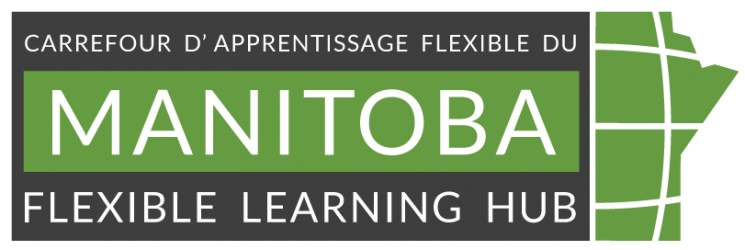
Image by LeoPatrizi from Getty
Getting students started in your online course
Based on the MB Hub blog post Getting Students Started in Your Online Course, written by Iwona Gniadek, originally published December 11, 2020.
Revised by JJ Cloutier and edited by Nancy Fischer
Content review August 2023
- Overview
- Pre-course welcome email
- Pre-course welcome email template
- A welcome announcement in your course
- Welcome announcement template
- An introductory video
- Syllabus or course outline as a guide to the course
- Syllabus or course outline resources
- Invite students to introduce themselves
- References
- Help for your online or blended course
Are you looking for ways to heighten how students become oriented and start successfully with your course? These strategies will help your students navigate the course environment, get to know you and forge connections with peers.
Overview
Use a combination of communication methods: email, multi-media and Learning Management System (LMS), and reveal more information in a progression to help start your students in their online course. The five key strategies that you, as an instructor, can use to help students get started in their course successfully are:
- Sending an introductory pre-course email that will excite students about the upcoming course.
- Posting a welcome announcement on the LMS landing page that directs students to the first tasks in the course.
- Showing a welcome video in the LMS to introduce and connect the students to the instructor.
- Providing a detailed and accessible course outline or syllabus in the LMS.
- Inviting students to introduce themselves to the class community in discussion forums.
Note: These strategies are in the order the learners will experience them, not the order an instructor needs to prepare them.
Pre-course welcome email
Around two-to-three days before the course starts, send all your students an email with a welcome message to notify them that the course is about to begin. It grabs students’ attention, provides instructions on how to get started on Day 1, and prompts students to verify their login credentials if they are new to online learning. Sending it will increase students’ chances for a smooth start to their learning experience with no delay.
This email is also a suitable place to notify students of any upcoming synchronous orientation sessions in Week 1. Live orientation sessions should be optional for students, but are highly encouraged, as they allow students to meet you, their instructor, and ask questions about the expectations for the course. If you offer a live session, consider recording it to benefit those who could not attend.
Pre-course welcome email template
Here is a sample of how you can set up your welcome message:
Email subject line: Welcome to [insert the course code here]
Email message:
Hi everyone, and welcome to [insert the course code here],
We begin the course on [insert the date here], but before we start, I want to give you an early welcome and highlight some valuable things to know.
- Before the first day of class, we suggest you log in to your [insert the name of your LMS here] and browse the environment.
- Watch tutorials to help you with any navigational questions.
- If you experience any difficulties, contact [insert the name of your IT services here] for help.
- Log into the course site as soon as the course opens on [insert the date here]. Take some time to browse the site and familiarise yourself with the information.
- Prepare to attend a live orientation session during the first week of class. Attendance is optional, but since I want to make sure that everyone has a chance to get comfortable with the course, the orientation session will be recorded for later review.
That’s all for now. I look forward to seeing you next week!
[Add your signature here]
Modified from the Welcome to Teaching Online course, section 4: Welcoming student, Pre-Course-Launch Email by Manitoba Flexible Learning Hub
A welcome announcement in your course
Add a welcome announcement that will greet students as soon as they enter the course site in your institutional LMS. The announcement welcomes students and provides information on what to do first.
According to the Quality Matters Higher Education Rubric Specific Review Standard 1.1 for designing high-quality online courses, it is critical to have clear instructions on how to get started on the course landing page. This will prevent students from getting lost in the course site and spending time looking for the most important first tasks to start the course successfully. You could title the announcement ‘Start here,’ indicate what to do first, and provide some navigational instructions for the course.
Welcome announcement template
Here is a brief example:
Announcement subject line: Start Here
Announcement content:
Hello everyone,
I am delighted to welcome you to the first unit of [insert your course code here].
In Unit 1, we will get to know each other and discuss everyone’s goals for this 12-week learning journey. I will talk about [add discussion items here]. By the end of Unit 1, everyone should know their way around the course.
This week, make sure you:
- Review the course syllabus, course schedule and assignment descriptions. Note any questions you have and share them on [insert the title of the relevant discussion forum here] so that everyone has a chance to get engaged in the conversation.
- Post a brief introduction of yourself.
- Add a few other important pointers relevant to your course.
I am looking forward to learning with you in this course!
[Add your signature here]
Modified from the Welcome to Teaching Online course (MB Hub login required), section 4: Welcoming student, Introducing your first week/unit/module by Manitoba Flexible Learning Hub
An introductory video
Personal introductions at the beginning of the course constitute one of the best ways to start building a relationship with students and satisfy the Specific Review Standard 1.7 of the Quality Matters Rubric.
Your introduction can be presented in the form of an introductory message or a video. A video introduction allows you to project your personality online and add a face to a name. When creating a video, consider telling students about your interests and your personal and professional background. Feel free also to include your preferred form of address and some fun facts, and do not redo your video if your pet decides to make its presence known – that adds character to your welcome.
Here are some helpful examples:
- Evan Ortlieb’s introduction is a great example of content, position, lightning, professionalism, and length.
- Another example, created by Extended Education, University of Manitoba, can be found in the Welcome to Teaching Online course (MB Hub login required) available through the MB Hub’s partner institutions. Ask for an instructional designer at your institution, or contact the MB Hub’s team.
Syllabus or course outline as a guide to the course
Institutions often require that instructors provide students with an updated course outline or syllabus. The syllabus should communicate the purpose and structure of the course. It should also contain various institutional policies and learner supports available to students at your institution.
We highly recommend using the available tools to build your syllabus inside your Learning Management System (LMS). It is a widespread practice to create a Word document (or a pdf) of the syllabus and upload it to the institutional LMS. However, such documents uploaded to the LMS may not be:
- Fully accessible to all students
- Easily viewable on various devices (phones and tablets)
- Able to be read well with different screen reader technologies
Note: The terms ‘course outlines’ and ‘syllabus’ are interchangeable on the MB Hub site as we consider them an essential tool and resource for both learners and instructors or professors in communicating expectations about the course and behaviour.
Syllabus or course outline resources
UCI Rubric & UCI Syllabus Template – Google Drive by the University of California Irvine includes a DEI (EDI in MB terminology) rubric and the syllabus template.
UM Syllabus toolkit by the University of Manitoba includes their standard syllabus, alternative formats, and links to their Inclusive syllabus and Compassionate pedagogy.
Creating course outlines by the University of Waterloo
Invite students to introduce themselves
Finally, your students should be allowed to introduce themselves to the class. Their introductions will build a sense of community and a welcoming learning environment.
Depending on the class size, you can invite students to respond to a specific prompt on the discussion forum, create a video or share a photo or another visual representation of who they are and what they bring to the course. Students should also be encouraged to read peers’ introductions and start making connections.
An essential element in fostering a friendly atmosphere is your participation. It is an opportunity to establish a teacher presence in your online course and stimulate engagement. Consider replying to all first posts or several, if your class is large. You may want to return to the posts and respond to those who responded to you to demonstrate good practice in maintaining dialogic exchanges.
Here are some examples of prompts:
- Describe a place that has a special meaning to you. (Restoule, 2018)
- Be creative with your introduction: include a video, an image, or a poem you’ve written – the aim is to tell us something about you and the place where you live. Please share only what you feel comfortable sharing. Read other students’ introductions and reply to some to start building connections. (Welcome to Teaching Online course, a MB Hub login required, by the MB Hub)
- Send a digital postcard to your classmates. Take a photo of the view or street you see from your room and tell us about it. (OEG 2020 Remixer Postcard)
- More ice-breakers for introductory discussion ideas
References
Restoule, J-P. (2018) ‘Where Indigenous Knowledge Lives: Bringing Indigenous Perspectives to Online Learning Environments’, in McKinley E., Smith L. (eds) Handbook of Indigenous Education. Singapore: Springer. Available at: https://doi.org/10.1007/978-981-10-1839-8_62-1
Help for your online or blended course

If you have any questions about the strategies or would like to discuss more options, feel free to book a consultation with MB Hub.
Book a one-on-one “Instructional Design Consultation” with our Instructional designer to explore how to prepare your students for their course.
You may also be interested in



Developing online learning activities for blended or distributed learning courses
